Occupational environment monitoring at the factory producing sofas
99,000 ₫
Note: The above price is calculated for one sample. Prices may fluctuate depending on the area of the environment to be monitored and market conditions. For more accurate pricing support, please refer to the price list or contact our consulting staff directly.
Workplace environment monitoring for a sofa manufacturing factory is a session of collecting, analyzing, and evaluating factors at the workplace that may be harmful to workers health.
Table of Contents
Toggle1. Overview of Sofa Manufacturing Factories
a. What is a sofa manufacturing factory?
A manufacturing factory for sofas is a production facility specializing in the manufacturing and assembly of various types of sofas. These factories are usually large-scale and equipped with modern machinery and equipment to carry out production and processing steps for sofas using different materials.

b. Production stages in a sofa manufacturing factory
At a sofa manufacturing factory, the basic production stages include:
- Design and development: The design team creates sofa models according to requirements and market trends. Engineers and designers prepare technical drawings and 3D models in preparation for production.
- Material preparation: This includes selecting and preparing the necessary materials for sofa production, including wooden frames, foam, cushions, leather or fabric coverings, and other materials.
- Cutting and processing: Fabric or leather sheets are cut into parts according to the specified sizes and design models. These parts are then processed and assembled into sofa components.
- Assembly and finishing: Sofa components are assembled and combined to create a complete product. Processes such as frame assembly, foam and cushion attachment, spring insertion, button upholstery, and sewing details are performed. The sofa is then finished by attaching legs, armrests, and other accessories.
- Quality control and packaging: Before shipment, sofas are quality-checked to ensure compliance with standards and requirements. The products are then packaged and prepared for delivery to stores or end customers.

c. Types of machinery used in sofa manufacturing factories
In sofa manufacturing factories, various machines and equipment are used to carry out production steps. Here are some common machines in the sofa manufacturing industry:
- Fabric cutting machine: Used to accurately cut fabric or leather sheets into sofa components according to design patterns.
- Foam cutting machine: Used to cut foam sheets to the required size and shape for seat, backrest, and headrest parts of the sofa.
- Foam pressing machine: Used to press and shape foam sheets into seat, backrest, and headrest parts of the sofa.
- Spring attachment machine: Used to attach springs to the seat and backrest parts to provide comfort and elasticity.
- Industrial sewing machine: Used to sew sofa components together. It is used for stitching details such as edges, button upholstery, and other decorative elements.
- Gluing machine: Used to glue sofa components, including foam, cushions, leather, or fabric coverings to wooden or metal frames.
- Woodworking machines: For sofas with wooden frames, woodworking machines such as saws, grinders, drills, and other processing machines are used to manufacture and process wooden parts of the sofa.
- Cutting and packaging machine: Used to cut and package sofa components after finishing, preparing them for shipping and delivery.

d. Occupational diseases for workers in sofa manufacturing factories
Workers in sofa manufacturing factories may encounter the following occupational diseases:
- Respiratory diseases: Workers in environments with dust, chemical fumes, or toxic gases may develop respiratory issues. This may result from inhaling wood dust, glue fumes, or emissions from production. Respiratory diseases may include pneumonia, sinusitis, asthma, and other respiratory problems.
- Spinal and musculoskeletal diseases: Sofa production processes may require workers to maintain awkward postures or apply force to the spine and musculoskeletal system. This can cause back pain, cervical spine degeneration, joint degeneration, and other bone and joint issues.
- Injury-related diseases: During production, there is a risk of injuries from tools, machinery, or sharp materials. Accidents can cause cuts, injuries, fractures, and burns.
- Noise-induced diseases: The work environment in sofa factories may have high noise levels from machinery. Continuous high-intensity noise can cause sleep disorders, stress, hearing loss, and ear problems.
- Chemical exposure diseases: Chemicals such as adhesives, paints, and leather softeners may be used during production. Prolonged or improper exposure can cause skin irritation, dermatitis, allergies, and other health issues.
To ensure safety and protect worker health, sofa manufacturing factories must comply with occupational safety regulations, provide appropriate personal protective equipment, ensure safe and clean work processes, and provide training and education on occupational safety for employees.

e. Popular types of sofas on the market
There are many popular types of sofas on the market, favored by consumers. Some common types include:
- Leather sofas: Made from genuine or synthetic leather. These sofas are luxurious, durable, and easy to clean.
- Fabric sofas: Available in various fabrics such as velvet, linen, canvas, blended fabrics, cotton, and linen. These sofas offer a cozy and comfortable feel.
- Corner sofas: Designed to utilize space efficiently and provide a spacious seating area. Ideal for families or large living rooms.
- Sofa beds: Can be converted into beds when needed. A great option for small living spaces or overnight guests.
- Chesterfield sofas: Classic style with large cushioned backs, decorative curves, and wooden legs. Adds elegance and sophistication to living spaces.
- Bean bag sofas: Frameless sofas made from fabric filled with plastic beads or foam pellets. Comfortable and flexible, suitable for recreation areas or bedrooms.
- Wooden-leg sofas: Sofas with wooden frames and sturdy wooden legs. Often minimalist and natural in style, adding accents to living spaces.
2. Overview of Workplace Environment Monitoring Services
a. What is workplace environment monitoring in a sofa manufacturing factory?
Workplace environment monitoring (or workplace environmental assessment) in a sofa manufacturing factory involves collecting, evaluating, and analyzing indicators of workplace environmental factors to take timely measures, minimize environmental hazards to worker health, and prevent occupational diseases. Workplace environment monitoring is mandatory for sofa manufacturing factories.
Workplace environment monitoring plays a critical role in protecting, maintaining, and improving worker health, as workers are the main resources of a company and directly generate profit. Workers frequently exposed to hazards exceeding permissible limits may suffer health impacts and develop occupational diseases.
REGISTER FOR WORKPLACE ENVIRONMENT MONITORING SERVICE
b. Nam Viet’s workplace environment monitoring program
Nam Viet’s workplace environment monitoring program is developed by environmental monitoring engineers specializing in occupational safety and environmental protection. To ensure worker health and safety, this program uses modern measurement methods to monitor air, water, microclimate, physical factors, dust, and other environmental elements. This program is crucial for ensuring a safe working environment and protecting worker health.
Additionally, Nam Viet’s monitoring program plays an important role in researching and developing new solutions to improve workplace environmental quality. With the dedication and professionalism of its experts, Nam Viet’s exclusive monitoring program represents a breakthrough in occupational safety management and environmental protection in Vietnam.

c. Standardization in workplace measurement procedures
Standardization in Nam Viet’s workplace measurement procedures is vital for ensuring the quality of measurement results. To ensure accuracy and reliability, this program follows standards and procedures recognized by the Ho Chi Minh City Department of Health. This ensures that collected data can be reliably used for workplace environmental assessments and decision-making to protect worker health.
These standardized procedures also ensure that measurements are conducted by highly qualified monitoring specialists with years of experience, enabling managers and experts to trust results from An Toàn Nam Việt and make accurate, valuable decisions to safeguard worker health and the environment.
By applying standardized procedures, Nam Viet demonstrates its commitment to ensuring a safe working environment, protecting worker health, and contributing to the improvement of occupational safety and environmental management in Vietnam.
d. Reporting results of workplace monitoring at sofa manufacturing factories
Workplace monitoring results are prepared according to Form No. 04, Appendix III issued with Decree 44/2016/ND-CP and prepared in two copies: one for the enterprise that signed the monitoring contract and one retained by the monitoring organization.
Workplace monitoring results must be stored indefinitely according to legal regulations.

e. Frequency of workplace environment monitoring according to law
According to Clause 2, Article 18 of the Law on Occupational Safety and Health 84/2015/QH13, employers must organize workplace monitoring to assess harmful factors at least once a year.
f. Deadline for submitting workplace monitoring reports according to law
The report submission deadline is before December 31 annually. Enterprises of production facilities must submit workplace monitoring reports to the local Department of Health where the production or business facility is headquartered and where workers are employed.
Whenever there are changes in technology or production processes, or during renovation or upgrades that may generate new hazardous factors for worker health, enterprises must update occupational hygiene records related to harmful factors requiring workplace environment monitoring.
g. Penalties for violations of workplace environment monitoring by employers
According to Article 27 of Decree No. 12/2022/ND-CP dated January 17, 2022, on administrative penalties in labor, social insurance, and Vietnamese workers working abroad under contracts:
- Clause 2: Fines from 2,000,000 to 5,000,000 VND for employers who fail to publicly inform workers at the monitoring site and at the workplace about the results of workplace monitoring and hazard assessment immediately after the results are available.
- Clause 3: Fines from 20,000,000 to 40,000,000 VND for employers who fail to conduct workplace monitoring to control harmful effects on worker health as required by law.
- Clause 4: Fines from 40,000,000 to 60,000,000 VND for employers who cooperate with monitoring organizations to commit fraud in workplace monitoring activities but have not reached the level of criminal liability.
3. Harmful environmental factors for workers in sofa manufacturing factories
Workers in sofa manufacturing factories may be exposed to several harmful environmental factors that can affect their health. The following are some potential hazards present in the workplace environment of sofa manufacturing factories:
- Dust and coatings: The cutting, processing, and finishing of sofas can generate dust from wood, fabric fibers, and coatings. Prolonged inhalation of dust and coatings can cause respiratory problems, leading to conditions such as asthma, pneumonia, and rhinitis.
- Chemicals: Some chemicals, such as adhesives, softeners, coatings, and solvents, may be used during sofa production. Exposure to these chemicals can cause skin allergies, dermatitis, eye irritation, and other health issues.
- Noise: Machinery and industrial tools used during production can generate high levels of noise. Continuous exposure to loud noise can cause hearing impairment, hearing loss, and other ear-related problems.
- Poor lighting: Workplace environments in sofa factories often have insufficient or uneven lighting. Working in poorly lit conditions can cause eye strain, visual fatigue, and affect vision.
- Uncomfortable movements: Work in sofa factories often requires repetitive motions and prolonged uncomfortable working positions. This can cause muscle strain, back pain, musculoskeletal issues, and problems related to poor posture.
REGISTER FOR OCCUPATIONAL ENVIRONMENT MONITORING SERVICE
4. Measures to improve working conditions in sofa manufacturing factories
To improve working conditions in sofa factories and protect workers’ health, the following measures can be applied:
- Dust and coating management: Ensure work processes include dust and coating management systems. Use effective dust extraction equipment to reduce airborne dust. Ensure proper air extraction systems and ventilation fans to maintain clean air in the factory.
- Chemical management: Ensure the use of safe and environmentally friendly chemicals. Train workers on proper usage and personal protection when handling chemicals. Implement safety measures to reduce chemical exposure, including personal protective equipment and proper chemical storage.
- Noise control: Assess and manage noise levels in the factory. Apply technical solutions to reduce noise, including sound insulation and barriers. Train workers on the use of ear protection devices and individual measures to protect hearing.
- Lighting improvement: Provide adequate natural light in work areas. Use appropriate artificial lighting and task lights to enhance workplace illumination. Ensure even lighting distribution to prevent eye strain and fatigue.
- Work design improvement: Optimize work design to reduce muscle strain and correct poor posture issues. Provide supportive equipment such as padded chairs with lumbar support. Train workers on correct posture techniques and encourage regular breaks.
- Information and education: Provide workers with sufficient information and education about environmental hazards and ways to protect their health. Train workers on using personal protective equipment, safety procedures, and workplace regulations.
- Periodically conduct occupational environment monitoring in factories, collecting and analyzing harmful factors for workers, and taking measures to reduce risks and prevent occupational diseases.
5. Benefits of periodic monitoring in sofa manufacturing factories
An Toan Nam Viet provides businesses with excellent advantages when using occupational environment monitoring services in accordance with Decree 44/2016/ND-CP on the management and control of harmful workplace factors affecting employees.
- Businesses can proactively control harmful factors in workshops or factories.
- Receive advice and recommendations on measures to minimize harmful factors and improve the quality of the working environment.
- Indirectly protect human resources, a key factor in business development.
- Reduce the harmful impact of occupational diseases on health, thereby minimizing future treatment costs.
- Improve worker health, ensuring product quality and maintaining production output.
- Ensure compliance with labor safety laws and avoid legal risks.
- Enhance credibility and professionalism in all aspects, elevating the company’s brand.
Nam Viet’s environmental monitoring service is a solution to reduce occupational disease risks, contributing to a clean and high-quality working environment.

6. National occupational environment monitoring center
Occupational environment monitoring center of Nam Viet is a professional unit specializing in monitoring and measuring workplace environmental quality across all provinces in Vietnam. With a team of experienced monitoring specialists, the center uses modern measurement equipment to ensure accuracy and reliability.
In addition to monitoring services, the center assists clients in planning, managing, and tracking occupational environmental issues. With the motto “customer-centered,” the center prioritizes customer satisfaction, meets all client needs, and is committed to providing the best solutions for businesses.
REGISTER FOR OCCUPATIONAL ENVIRONMENT MONITORING SERVICE
With investments in technology, equipment, and human resources, Nam Viet’s monitoring center has become one of the most reputable units in occupational environment monitoring in Ho Chi Minh City, with the following objectives:
- We always value our brand reputation and the quality of our services.
- We provide clients with the best and most suitable solutions possible.
- Alongside a team of experienced Masters and Engineers, committed to environmental protection and business benefits.
- At Nam Viet Environmental Monitoring, companies receive professional service from experts in the monitoring field, along with the best cost advantages.
The occupational environment monitoring process at Nam Viet includes the following basic steps:
- Before conducting monitoring, our company ensures all equipment is calibrated according to legal regulations.
- Follow the occupational environment monitoring procedures committed to the Department of Health accurately and fully.
- Report monitoring results honestly to employers.
- If monitoring results indicate unsafe conditions, Nam Viet provides corrective solutions, and the workplace implements the following:
- Implement measures to improve working conditions, minimize harmful factor impacts, and prevent occupational diseases.
- Conduct health examinations to detect occupational and related diseases early for workers in unsafe environments.
- Provide in-kind compensation to workers according to labor law.

7. Occupational environment monitoring quotation
To help businesses conduct professional and effective occupational environment monitoring, Nam Viet provides clients with a quotation for occupational environment monitoring services that is high-quality and reasonably priced.
- Our quotation provides detailed pricing information for the monitoring services we offer, including costs related to travel, measurement, analysis, and reporting. Clients can trust the accuracy and reliability of the monitoring reports we provide.
- We commit to offering competitive and reasonable prices in the market and are always ready to provide quick and professional advice for any inquiries regarding monitoring services.
- With Nam Viet’s monitoring quotation, clients can easily select service packages suitable to their needs. We are committed to delivering the highest satisfaction with professional service quality.
No comments yet

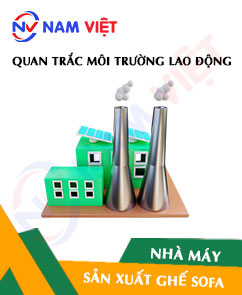
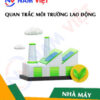
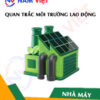

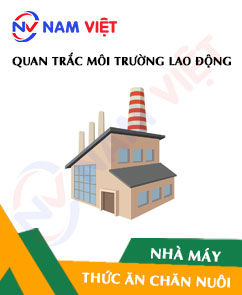

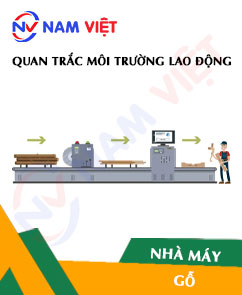
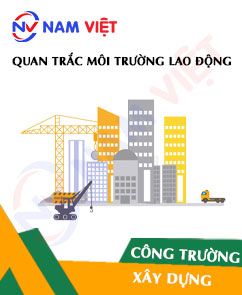

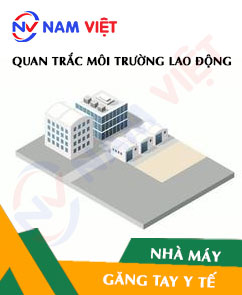

Review Occupational environment monitoring at the factory producing sofas
There are no reviews yet.